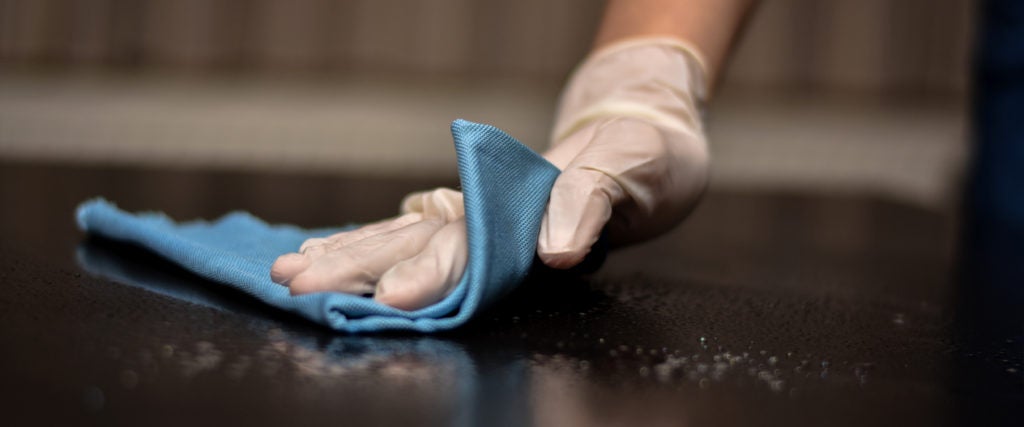It’s kind of funny (and by funny, I mean frustrating and depressing) how at the beginning of the pandemic, we were all disinfecting our groceries and mail, and now about half the country is comfortable attending communal makeout parties despite the number of daily cases being around six times worse than it was then. The thing is, neither approach is entirely appropriate. While you should definitely still be avoiding close contact with other people, when it comes to concerns about spreading COVID-19 via surfaces, you can partially relax.
There has yet to be any conclusive evidence that COVID-19 is viable on surfaces or that anyone has become infected with COVID-19 from touching a surface, according to University of California, Davis Health. This doesn’t necessarily mean that nobody has transmitted COVID this way, but that researchers don’t believe it to be a significant source of spread and have instead focused their efforts on understanding the nuances of how COVID is spread person-to-person.
Both the CDC and the World Health Organization state that COVID-19 is primarily spread between individuals less than six feet apart via respiratory particles. An infected person releases particles when they breathe, speak, cough or sneeze, which can then be inhaled by another person in close proximity. These particles contain the virus, therefore infecting the other person.
The CDC’s information on contact tracing further states that contact typically needs to last for 15 minutes or longer for transmission to be of concern. This at least partially suggests that the quantity of respiratory particles a person inhales plays a factor in them becoming infected. While respiratory droplets carrying the virus could land on a surface that is then touched by another person who later touches their eyes, nose or mouth, it’s unlikely that this would be enough to get them sick.
The key word, though, is unlikely. The CDC and WHO both state that it is possible to become sick this way, though it’s “not thought to be a common way that COVID-19 spreads.” Because of this chance, you should absolutely still be regularly washing your hands, and frequently touched surfaces (especially public ones) ought to be regularly disinfected.
Unfortunately, overdoing it on disinfecting, whether that be on hands or surfaces, can have consequences of its own. Many of the cleaning products approved by the Environmental Protection Agency for killing COVID are known to cause respiratory issues when used long-term. Furthermore, over-use of hand sanitizer and disinfectants could potentially lead to the development of bacteria that is resistant toward it.
Of course, we have a much bigger task at hand to face before we ought to become too concerned about future superbugs. So again, it’s still important to wash your hands often and avoid touching your face. If you’re unable to wash your hands, hand sanitizer will do. It’s perfectly fine to want to disinfect your bathroom, or to Lysol your doorknobs. But if you’re still wiping down all your groceries when you bring them home, you might be overdoing it.

